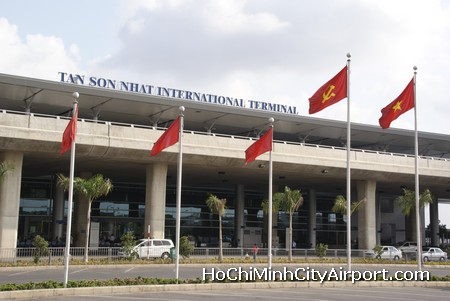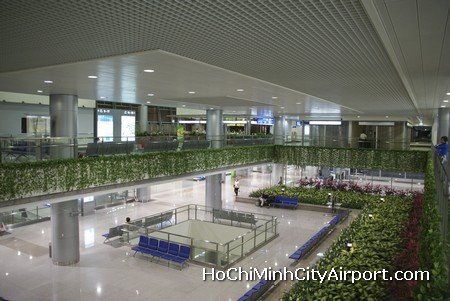I keep remembering stuff to add to the Viet Nam evacuation. Here's another part of the story. I'm going to write a more or less compete overview of my participation in operation "Frequent Wind", which was the code name for the whole operation.
Operation Baby lift April 1975
Another of the dramatic incidents of the evacuation of Viet Nam concerned the early days of the airlift, when one of the top priorities involved transporting babies and young people from the Saigon area orphanages. The history of this operation is told in full at the
following web site.
The first baby lift flight that was operated by USAF aircraft was on 4 April 1975, in a C5-A that had dropped off cargo at Ton Son Nhut. They loaded up several hundred orphans, and other civilian and military personnel, and took off. The C5-A, while being made by Lockheed, the
same company that constructed the 141, was not anywhere nearly the same plane. The C5A was plagued by numbers of design flaws. They were so unreliable that we 141 guys used to call them “flying Edsels”.
All kinds of jokes were made about the C5, including this one: “What should they do with the C5 fleet?” Answer, “Cut off their wings and make rolling apartment houses out of them”. One of the problems they were having involved the rear pressure door. The system was essentially similar to the 141’s , in that the rear ramp came up, then a large flat door that was lifted up out of the way to allow cargo loading, was pivoted down and mated up with the ramp. There were latches on the door and ramp that were engaged by the loadmaster to secure the door and ramp together, forming a pressure seal. However, as it can be imagined, there was anenormousamount of air pressure on this door. There had been a number of incidents on the C5-A of these latches failing, and allowing a partial or complete failure of the rear pressure door system.
At 17,000 feet, on climb out from Saigon, the rear pressure door latches failed completely. When this happened, the large door was pivoted violently upwards on its hinges. The end of the door contacted the underside of the tail assembly and did severe damage. In this area ran the hydraulic lines that controlled the rudder. All the lines were severed, which completely drained the hydraulic fluid from all systems, causing total failure of all the plane’s flight controls. The flight controls of large planes are mechanically actuated (today a lot of the planes are “fly-by-wire” ie. electrically actuated) and hydraulically driven, because the force necessary to move the large control surfaces was beyond human strength. All large aircraft have multiple redundant
backups, in case of system failures. However, in the case of this C5, they were out of options and in a world of hurt at 17,000 feet. The Aircraft Commander, a Captain named Trainor, who, by the accounts of some guys I knew who were in his squadron, was a bit of a screw-off, and had been in some trouble with his squadron from time to time. However, when his time came, he had what it took.
The first thing that happened after all control of the plane had been lost, was that the plane began to nose over to enter the death dive to earth. Capt. Trainor’s flying instincts, and knowledge of the airplane, took over. The C5 and the 141 were similar in design, and had similar
flight characteristics. In both planes, when you added power, it pitched the nose of the plane up. Both planes had swept wings and both planes, when you added power on the right side, for example, it yawed the plane to the left. In this case, the plane would also turn left, because the
right wing was turned more squarely into the relative wind over the wing, so that wing would create more lift, banking the plane left.When the plane went into the initial dive and Capt Trainor realized he had no control over the plane, he did the totally counter-intuitive thing, because he added power. He knew that the plane would pitch up. When the plane started to roll one way or the other, he added power on the side of the plane to which the plane was rolling. In the space of a couple of minutes he had established the operational parameters of the airplane. He could turn the plane carefully with differential power, but a big problem was that he could not lower the plane’s flaps, which allowed a slower landing speed. So he was stuck with the speed and the power setting that was giving him a level flight attitude.
The good news was that he could maintain level flight. The bad news was that the power setting that gave him level flight, also gave him an air speed of 300 knots (345 mph, that’s more than twice the landing speed of the typical airliner).
Be that as it may, that’s what he was stuck with. Capt. Trainor managed to maneuver the plane closer to the ground, and line it up with the runway at Ton Son Nhut, but could not adequately
control the pitch of the plane, and he contacted the ground in a rice paddy a couple of miles short of the runway. The plane continued along the ground, hit a levee and bounced all the way over the Saigon Riverand came to rest in a rice paddy on the other side of the river. A couple hundred children and adults were killed, including several of the flight crew. The C5 is essentially a two-story airplane. Upstairs there’s a passenger compartment with regular airline type seats, and the flight deck, downstairs is the cargo compartment where temporary seats can be set up. Most of the casualties were on the lower deck, because that’s what contacted the ground first, and that’s what started coming apart after the ground was contacted. Capt. Trainor may have been a bit of a squadron shitbird, but he had the right stuff when it really
mattered.
I THINK he was warded the Air Force Cross (same as the Navy Cross) for his actions that day.
Much of this incident is very similar to what happened a United Airlines DC-10 some years back. Many of you have seen this on TV. They had an in flight engine failure that severed all the hydraulic lines, causing total loss of controls, and they had to land at Sioux City Iowa. The
reasons for the loss of flight control were different, but the way the United Pilots handled the emergency, and the outcome of the incident were very similar to the C5 crash.
I probably arrived in theater around 10 days after the crash, I can’t remember exactly, but that’s about right. My first 2 or 3 flights into Saigon were to resume and complete Operation Babylift. I loaded several hundred children and babies, mostly from the Pearl Buck Orphanage. As you approached the runway, the C5’s path across the ground, and the wreckage strewn everywhere could clearly be seen. When you’re flying a plane and see the end result of a flight gone badly, it makes you concentrate just that much more.

This page was last updated: October 3, 2010

 | ||||||
This photo has nothing to do with pages 1, 2, or 3 either
but it's nice eye candy for my fellow Marines
S/F
Paul
Click here to add text.
Tan Son Nhat International Airport (IATA: SGN, ICAO: VVTS), is the largest airport in Vietnam. It is located 4 mi (6 km) north of the center (District 1) of Ho Chi Minh City (Saigon).


 | ||||||
 | ||||||